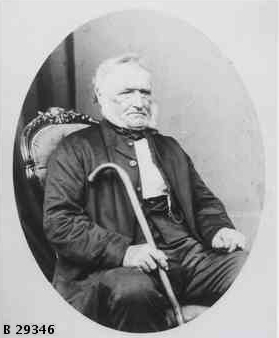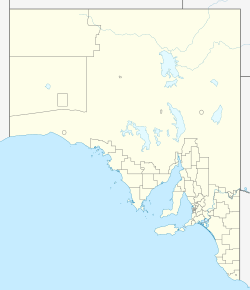Louth Island facts for kids
| Geography | |
|---|---|
| Location | Spencer Gulf |
| Coordinates | 34°34′40″S 135°57′15″E / 34.57776°S 135.95403°E |
| Administration | |
|
Australia
|
|

Louth Island is a small island in Louth Bay, which is part of Spencer Gulf in South Australia. The island is about 135 hectares in size, which is roughly the size of 200 football fields!
Louth Island is owned by private people. In the past, it was used to raise sheep and to dig up guano, which is a natural fertilizer from bird droppings. The island has an old building where people can sleep, along with several sandy beaches and rocky areas near the shore. It's easy to get to by boat, as it's only about 17.5 kilometers north-northeast of Port Lincoln. The Aboriginal name for the island is Yorunu.
Contents
History of Louth Island
Louth Island has an interesting history, from sheep farming to oyster dredging.
Early Days and Sheep Farming
In January 1861, a sheep living on Louth Island showed amazing wool growth. Its wool was 12 inches long, and its fleece weighed 24 pounds! At that time, Captain Bishop of Port Lincoln was looking after the island and its animals.
Later in the 1800s, a man named Alexander Watherston was in charge of Louth Island. His family continued to be involved with the island for many years.
Oysters and Guano
In the early 1900s, people started looking for oysters in the waters around Louth Island. They would dredge, or dig, the seabed to find them.
In 1917, a special agreement was offered to allow people to collect guano from the coastal areas around Louth Island. Guano is a natural fertilizer made from the droppings of seabirds.
Island Ownership Changes
In 1915, Louth Island was sold at an auction. A person named W. B. White from Port Lincoln bought it. He paid £4 8/6 for each acre of land.
In 1938, a photo of Louth Island was shown in a shop window in Port Lincoln. It was part of an exhibit of local "Beauty Spots," showing off the area's pretty places.
Exciting Events and Mysteries
Louth Island has been the scene of some interesting and mysterious events over the years.
Caught in a Storm
On October 18, 1910, a man named W. E. Goode and his two young sons were fishing near Louth Bay. A sudden storm, called a squall, hit their boat. It pushed them out to sea. Luckily, a search party saw them on Louth Island. They were rescued the next morning, very tired but safe.
The Disappearance of Thomas Russell
In March 1921, a worker named Thomas Russell disappeared from Louth Island. He was working there for the island's owner, Mr. White. When a boat arrived with supplies, they found the house empty and messy, with dead chickens around. People searched the island for clues, but Thomas Russell was never found.
The Lost Ketch Vivid
In 1935, two farmers said they saw what looked like the wreck of a boat called the ketch Vivid. They thought it was between Louth Island and the mainland. This boat had been lost years before, with everyone on board.
Queenie the Swimming Dog
In 1947, Captain F. G. Sawford was on his boat, the ketch Hawthorne. His pet dog, a cocker spaniel named Queenie, fell overboard in rough seas. This happened several miles from Louth Island after dark. Amazingly, Queenie swam all the way to the island and was later returned safely to her owner!
Little Penguin Colony
Louth Island has been home to a large group of little penguins. These are the smallest penguins in the world!
Historical Penguin Sightings
In 1874, a man named Masters described seeing "millions" of penguins breeding on the island. He said that by November, the baby penguins had already hatched. Masters even mentioned that his group had to build a small barrier around their tent at night. This was to stop the penguins from knocking everything over!
He also saw a pair of white-bellied sea eagles nesting near the penguin colony. These eagles were hunting the penguins, and penguin skins were found piled around the eagles' nest. People had also seen little penguins on the island as early as November 1865.
Recent Penguin Status
In 2008, people found tracks on Louth Island, which suggested that little penguins were still there. In the same year, penguins were seen nesting on Rabbit Island, which is nearby.
As of 2015, we don't know for sure how many little penguins are still living on Louth Island.


